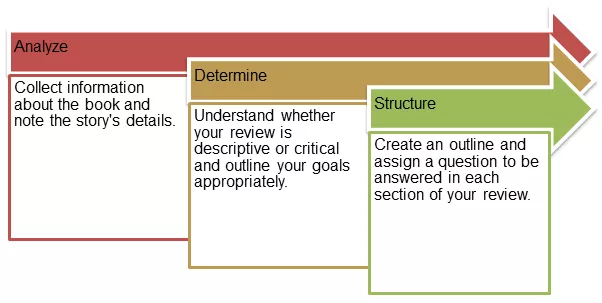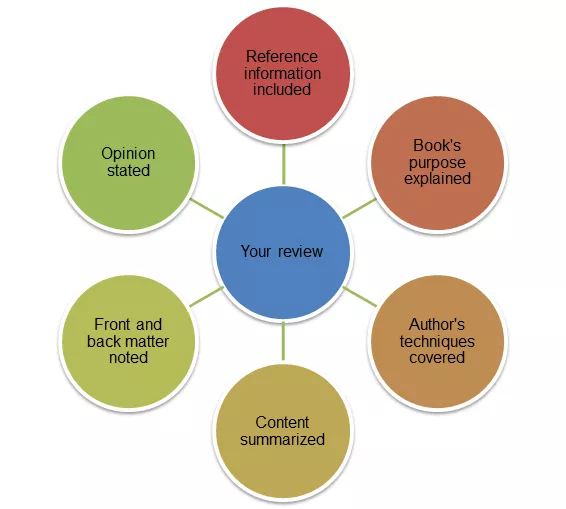How to Write a Book Review Like an Expert
This piece of content has been developed by IvyPanda's editorial team.
No AI was involved in the creation process; only qualified experts contributed.
The information, facts, and sources presented in the text have been carefully checked and verified.
You are free to use it with proper referencing.
A book review is an appraisal of a written work based on its content, style, and execution, going beyond simple analysis and touching upon aspects related to publishing and even audience reception. Thus, your review must cover all facets of the book from technical to literary, providing a comprehensive guide for a reader regarding the book’s context and content. Due to this, understanding the basics of writing such a review is an necessary learning step before the process can be begun.
Before You Start Writing
It should come as no surprise that you should first read your book of choice, interpret it, and only then begin to write a report. Before writing, however, following three critical steps will not only decide the quality of your review but will also help you form its structure (see fig. 1). Skipping these steps is a mistake that many students make, diving straight into the writing process without understanding the mechanics behind the genre, which leads to weak reviews.

Analyze the Book
The first pre-writing step is to evaluate the book: take notes, pay attention to themes, and attempt to draw parallels between different chapters that the author may have intended. Additionally, keep in mind the genre, literary style, and the book’s date of creation before drawing conclusions about the author’s intentions. Ray Bradbury, Jack Kerouac, and Sloan Wilson have little in common beyond publishing their most famous books in the ’50s, but you should treat them as the products of their time, influenced by past events. Understanding these events and their reflection within literature should help you discern the themes and ideas the author intended to convey.
Choose a Type of Book Review
Two types of book reviews are critical and descriptive, and each has its own set of writing specifics. Writing a descriptive review requires that you, as the writer, be objective. This type of review is easier to execute as it only requires retelling and highlighting the story’s essential parts with minimal interjections. A critical review, on the other hand, demands that you state your opinion and evaluate the chosen book against a background of other, similar books, comment on the author’s goals, and assess his or her success. Your professor will likely more often assign you critical reviews, and you should prepare for this appropriately.
Structure Your Book Review
After collecting enough information about the content and context of both author and book, separate the information you have found into categories. The most common division would fall under the headings “information about the author,” “historical background,” and “technique,” which should have subheadings relating to the themes, ideas, and characters that the author uses. Ideally, you should create a set of questions about the book that you will answer one at a time in each stage of your review.
The Process of Writing a Book Review
After you have collected all necessary information and created an outline, you can begin your writing process using your existing work as a guide. However, writing a review is not a matter of lumping together analysis with the author’s biographical information and handing in your work. For your professor to regard your review as high-quality work, it must touch upon specific topics unrelated to the writing process but of equal importance to the book and to you as a reviewer (see fig. 2). Including these elements will make your review well-rounded, gaining a higher grade.

-
Collect Bibliographic Information
Bibliographic information, whose relevance might at first glance evade you, is one of the most crucial aspects of a book review as it allows your reader and, more importantly, your grading professor to follow you using the same edition. As a literary example, consider Stephen King’s The Dark Tower series, which has undergone considerable changes depending on whether you are reading the 1982 or the 2003 edition. Understand this and make sure you include bibliographic information in your review’s header according to your professor’s specified citation style (i.e., APA, MLA, Chicago, etc.). Be consistent in following citation rules, as this not only influences the readability of your paper but also speaks for its quality and your academic professionalism. -
Outline Your Review’s Purpose
In the first paragraph, your reader should understand the purpose of the book under review; this means that your thesis statement should explain the author’s position on the subject covered. This part of your report should be to the point and not overburdened with extra information, providing a concise explanation of the book’s intent and your goal for reviewing it. Regardless of whether your review is critical or descriptive, your introduction should be unbiased, allowing your readers to form expectations and opinions based on your impartial explanation and permitting them to critically assess your review. -
Pay Attention to the Author’s Technique
You should focus on the words the author uses, paying attention to the narrative style, depiction approach, the composition of facts, and the argument these techniques collectively support. Books such as Food: The History of Taste and A Brief History of Neoliberalism will understandably draw on different methods to influence the reader. Cover how the author attempts to place the reader within the narrative by providing various sensory details along with the chosen sequence of narration (i.e., chronological, thematic, etc.) and the included facts. Quoting from the book to support your argument is encouraged as this allows the reader to read at first hand and assess the author’s voice, helping you explain the author’s end argument explicitly. -
Assess the Book’s Content
Your task as a reviewer is to approach critically any information you are attempting to cover, testing not only its stylistic soundness but also its factual basis. It is especially important to consider not only the text of the book but also any visual elements, explaining how they help support the main argument. Make sure you understand the story’s topic and perspective, and try to find omitted factual evidence and justify why the author did not include these facts. However, to avoid confusing the reader, make it clear when you are quoting the author by using the appropriate citation style and note when you are stating your own opinion. -
Read beyond Storytelling: Front and Back Matter
It is crucial to understand that a book is not just a collection of facts and techniques but also the result of a meticulous publishing process. You should cover any author’s commentary preceding the main book content, the foreword, acknowledgments, and table of contents—anything that forms the front matter—with an approach equally as critical as to the book itself. Assess whether it is helpful, factual, detailed, and adequately reflective of the book’s contents, and do the same for the back matter such as the appendices, afterword, and glossary. The bibliography as an element that constitutes the information base for the author’s work should comprise one of the most crucial points in your assessment of the book’s back matter. The quality of the book, like that of your review, is founded on the supporting information and the purity of its provision. -
Include Your Opinion
Writing a concise but evaluative summary is the final step of your review and should reflect all the work conducted by providing a logically supported conclusion. Present your final evaluation of the author’s work (not opinions on the book’s separate sections) and tie it all together into a single idea, which should already have been developed throughout your review. Reword and support your original thesis statement, effectively concluding your work on a note that is well-thought-out and supported by evidence that testifies to the good quality of your work. Include any outside sources you have used beyond your reviewed book on a separate page, adhering to the specified citation style, and remember that plagiarism is a punishable offense.
Conclusion
Writing a comprehensive, thoughtfully prepared book review includes dedication and hard work as you must not only evaluate the techniques and included facts but also search for any information that the author may have omitted. Critically approaching information and assessing it through an evaluative lens should be your primary goal as you, the reviewer, are responsible for judging the extent of the author’s efficiency in supporting the argument presented. You should even scrutinize chapter titles and the chosen bibliography; each step of the book-creation process reflects a conscious decision made not only by the author but also by the book’s publisher and editor. Sources of high quality should support your attempt to assess someone else’s arguments even as outside evidence should uphold their work. Thus, understanding the mechanics behind writing a review, the preparation process, and the writing itself should help you perfect your skills and prevent you from making easily correctable mistakes.